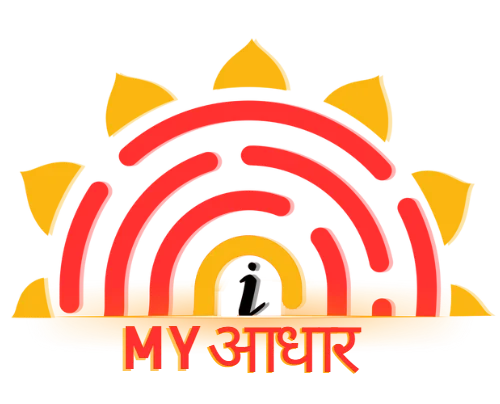How To Link Aadhaar Card To Caste Certificate
The Aadhaar Card, a 12-digit unique identification number issued by the Indian Government, serves as a crucial proof of identity for various purposes such as banking, tax filing, and official document applications. Obtaining an Aadhaar card involves minimal personal information and biometric data submission at a government-approved center. In recent years, the government has introduced numerous welfare programs accessible through Aadhaar, making it essential to possess a correctly issued card. An example of such an initiative is linking Aadhaar to caste certificates, facilitating underprivileged individuals in accessing welfare benefits through the appropriate channels.
How to link your Aadhaar card with your caste certificate:
To link your Aadhaar card to your caste certificate, if applicable, consider the following general steps:
- Check Eligibility: Verify if your state government or local authorities have introduced a scheme or requirement for linking Aadhaar with caste certificates. This may be specific to certain welfare programs or benefits.
- Collect Documents: Gather the necessary documents, which typically include your Aadhaar card and caste certificate.
- Visit Government Offices: If a linkage process is in place, visit the relevant government office or department that handles caste certificates or welfare schemes. This could be your local Panchayat office, Revenue Department, or a similar authority.
- Fill Application Form: If required, fill out the application form for linking your Aadhaar with your caste certificate. You may need to provide personal details and Aadhaar information.
- Submit Documents: Submit the filled application form along with your Aadhaar card and caste certificate copies to the designated officer or authority.
- Biometric Verification: In some cases, you may be required to undergo biometric verification for authentication. This could involve fingerprint or iris scans to confirm your identity.
- Receipt and Confirmation: After submitting your application and undergoing any necessary verification, you should receive a receipt or acknowledgment. Retain this as evidence of your application.
- Follow-up: If there are any further steps or requirements, follow the instructions provided by the government authorities.
- Verification and Approval: The government authorities will verify the information, and if everything is in order, they will link your Aadhaar with your caste certificate.
- Confirmation: You may receive a confirmation message or notification regarding the successful linking of your Aadhaar and caste certificate.
Advantages of connecting your Aadhaar card with your caste certificate:
The advantages of linking your Aadhaar card to your caste certificate include:
- Streamlined Access to Benefits: Simplifies the process of accessing government welfare schemes and benefits designed for specific caste groups.
- Reduced Duplication: Helps in eliminating duplicate or fake caste certificates, ensuring that the benefits reach genuine beneficiaries.
- Enhanced Accountability: Promotes transparency and accountability in the distribution of caste-based benefits, reducing the likelihood of fraud or mismanagement.
- Efficient Service Delivery: Facilitates more efficient and targeted delivery of services, ensuring that those in need receive timely assistance.
- Digital Records: Enables the government to maintain digital records of beneficiaries, aiding in program management and evaluation.
- Avoids Paperwork: Reduces the need for extensive paperwork and manual verification processes, making it more convenient for beneficiaries.
- Compliance with Government Initiatives: Aligns with government initiatives aimed at improving the delivery of social welfare programs and ensuring equitable access to benefits.
Procedure for linking Aadhaar cards with caste certificates:
The primary responsibility for linking Aadhaar cards to caste certificates rests with the State Government. While Aadhaar cards are issued by the Unique Identification Authority of India (UIDAI), the State Government is tasked with the on-ground implementation.
The State Governments are responsible for:
- Ensuring widespread Aadhaar card coverage among the population.
- Issuing Caste Certificates or Domicile Certificates to eligible individuals.
- Facilitating the linkage of Aadhaar Cards with Caste Certificates for all students in class 10 and 12 within a month or two of their admission.
- Taking charge of this linkage process for the most backward class, regardless of their education status.
In essence, the State Government plays a pivotal role in coordinating and executing the Aadhaar card and caste certificate linkage, aiming to streamline access to benefits and services for citizens.
FAQS:
A1: Linking Aadhaar with a caste certificate is often required to avail of specific government welfare schemes and benefits targeted at particular caste groups.
A2: The requirement for mandatory linkage can vary by state and specific welfare programs. It's essential to check with local authorities for the latest guidelines.
A3: The availability of online linkage may depend on your state or region. Check with your local government or relevant department for online options, if available.
A4: Typically, you'll require your Aadhaar card, caste certificate, and any other documents specified by your local authorities.
A5: Visit the concerned government office or authority responsible for caste certificates or welfare programs in your area to apply for the linkage.
Conclusion:
Linking your Aadhaar card to your caste certificate is a crucial step for accessing government welfare schemes and benefits tailored to specific caste groups. While the mandatory linkage may vary by state and program, it’s essential to stay informed about local guidelines and requirements. By following the correct procedure and submitting the necessary documents to your local authorities, you can ensure that you receive the benefits and services intended for your caste group, contributing to more equitable and targeted social welfare.
